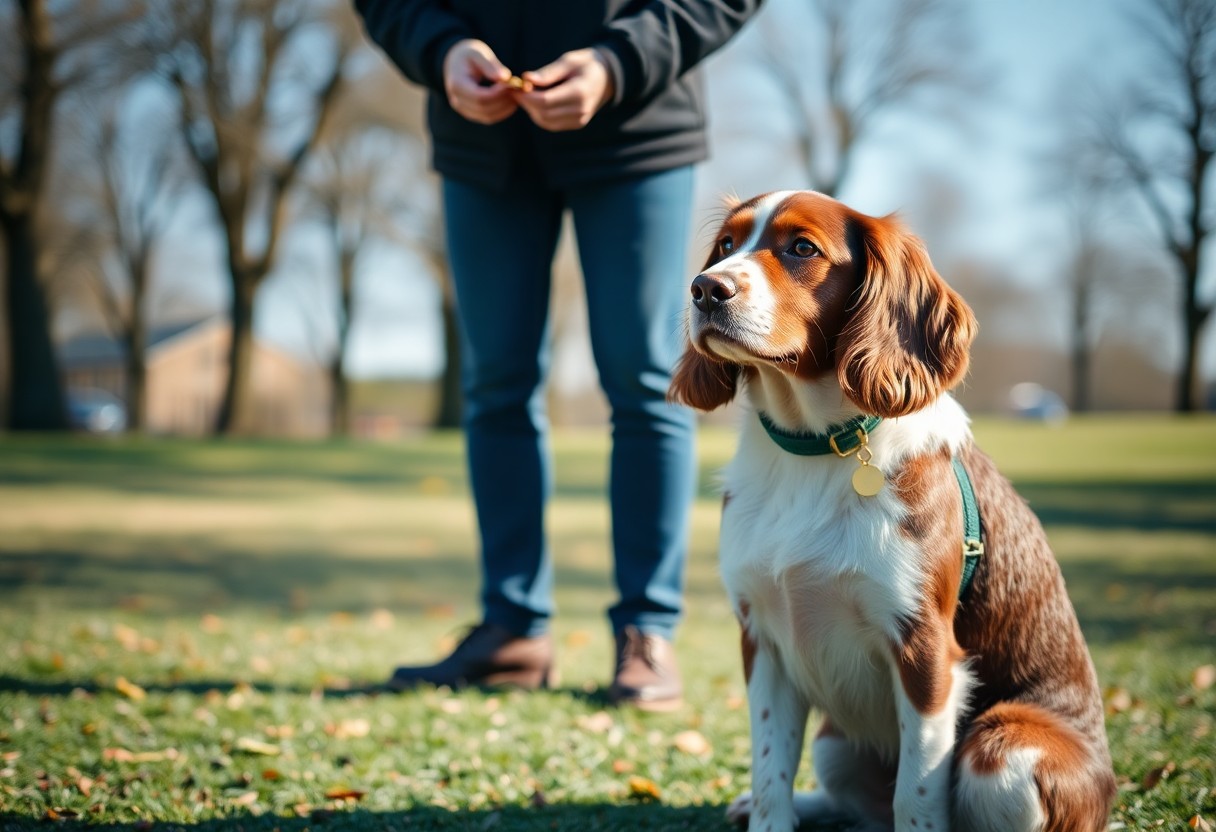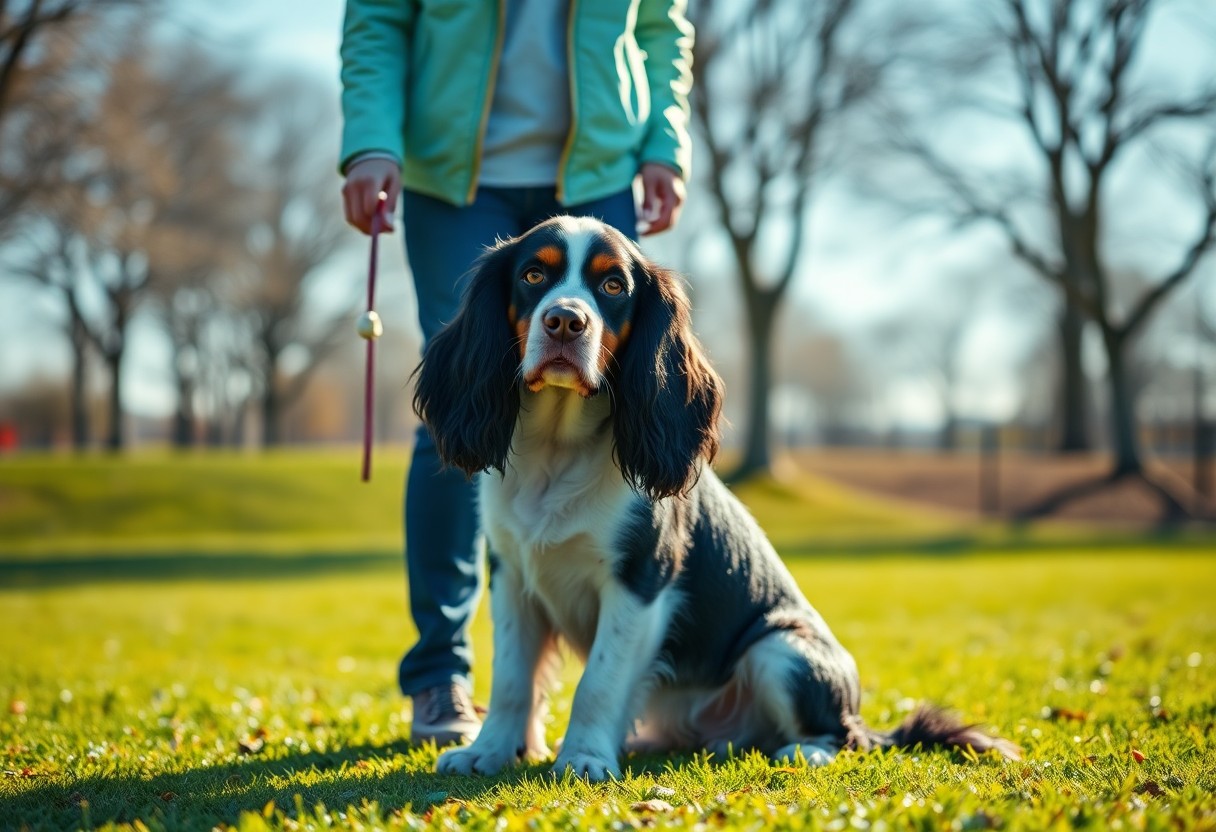You’ll find that Spaniels possess a remarkable intelligence and an innate eagerness to please, which positions them as one of the easier breeds to train. Utilizing positive reinforcement methods can enhance your training sessions, making them both effective and enjoyable for your dog. By focusing on rewarding good behavior, you’ll help foster a strong bond while teaching your Spaniel crucial commands and skills. Understanding their unique temperament will further ensure that your training experience is productive and fulfilling.
The Intelligent Nature of Spaniels
Spaniels exhibit a remarkable blend of intelligence and enthusiasm, which makes training them both rewarding and effective. Their ability to learn commands and tricks rapidly stems from a natural curiosity and desire to please their owners. This combination often results in them mastering new skills in just a few repetitions, particularly with engaging methods like clicker training or fun reward systems.
Cognitive Abilities: An Overview of Spaniel Intelligence
Spaniels are renowned for their advanced cognitive abilities, ranking highly among dog breeds in terms of intelligence. They excel in problem-solving tasks and have an excellent memory, allowing them to retain commands and behaviors over time. This mental agility makes them ideal candidates for various activities, including obedience trials and scent work, showcasing their innate talents and adaptability.
What Sets Spaniels Apart from Other Breeds
Spaniels stand out from other dog breeds due to their distinctive combination of intelligence, affectionate nature, and strong retrieving instinct. While many breeds possess intelligence, Spaniels leverage that intelligence into an eagerness to engage with humans and fulfill tasks. Their instinctual drive to retrieve and work alongside their owners enhances their training experience, making them not just obedient but also enthusiastic participants in various activities. This unique blend ensures that they remain devoted companions, constantly striving to be a step ahead in understanding what you want from them.
The Eager-to-Please Attitude
Spaniels possess an innate eager-to-please attitude that significantly enhances the training experience. Their strong desire to make you happy makes them receptive to commands and eager to learn. This trait allows for quick learning, enabling you to teach them various commands and tricks with less effort. When you use positive reinforcement techniques, such as treats or praise, their enthusiasm becomes even more pronounced. Your Spaniel will look to you for guidance and validation, creating a productive and enjoyable training environment.
Motivation and Bonding: The Emotional Connection
The bond you share with your Spaniel creates a powerful emotional connection that motivates them to learn. When you engage in training, your dog not only seeks to please you but also deepens the trust and affection between you both. This connection enhances the overall experience, leading to consistent training sessions and improved behavior over time. Investing time into building this bond pays off as your Spaniel becomes more enthusiastic and focused during training.
Impact of Personality on Training Success
A Spaniel’s unique personality can greatly affect training outcomes. Energetic and playful Spaniels may require you to incorporate more engaging activities and challenges into training sessions, while a calmer Spaniel may thrive on quieter and more focused exercises. Understanding your dog’s personality helps you tailor your approach, ensuring better results and a more enjoyable experience for both of you.
For instance, a high-energy Spaniel might excel in agility training, where they can expend their energy while learning commands. On the other hand, a more reserved Spaniel may respond better to low-key instruction sessions that focus on building confidence. By recognizing and adapting to your dog’s personality traits, you can create a training plan that aligns with their natural tendencies, leading to increased motivation and improved success in learning new behaviors.
Positive Reinforcement: Best Practices
To effectively train your spaniel, employing positive reinforcement is vital. This method involves rewarding desired behaviors to encourage them in the future. For aspiring trainers, using treats, praises, and toys plays a key role in reinforcing positive actions. Keeping the training sessions short and engaging will help maintain your dog’s attention and enthusiasm. For more insights on training methods, check out Cavalier King Charles Training | Successful Tips and Tricks.
Techniques that Work: Praise, Treats, and Play
Integrating techniques that focus on praise, treats, and play can tremendously enhance your training sessions. When your spaniel demonstrates a desired behavior, immediately reward them with a tasty treat or an enthusiastic scratch behind the ears. This immediate positive feedback lets your dog know they’re on the right track. Incorporating playtime, such as a quick game of fetch after a successful command, cements the learned behavior while keeping training fun and rewarding.
Common Mistakes to Avoid in Positive Training
Avoiding common pitfalls in positive training is just as imperative as employing effective techniques. Many trainers unintentionally discourage their dogs by offering inconsistent rewards or correcting unwanted behavior without positive affirmation. Ensure that your spaniel associates training with enjoyment rather than dread. Creating a clear correlation between good behavior and rewards will help solidify their learning. Instead of scolding them for mistakes, redirect their actions and reward them when they make the right choice. This way, training becomes a positive experience for both you and your spaniel.
Tailored Training Approaches for Spaniels
Each spaniel breed has its own quirks, requiring customized training strategies. To effectively engage your dog, consider their specific tendencies and traits. Positive reinforcement is universally beneficial, yet adapting your techniques to fit their unique personality can enhance your spaniel’s learning experience. For further insights, check out Essential Cocker Spaniel Training Tips for a Well-Behaved ….
Age and Development Stage Considerations
Your spaniel’s age significantly influences the training approach. Puppies are often more receptive and energetic, making them excellent candidates for foundational training. As they mature, training can shift focus to reinforce good behavior and skills. Tailoring your lessons to suit their developmental stage ensures you maintain their engagement and enthusiasm for learning.
Customizing Training Methods to Individual Spaniels
Each spaniel brings a unique set of traits and challenges to the training table. Some may excel with agility courses, while others thrive on scent work, demonstrating their diverse abilities. Take time to assess your spaniel’s unique preferences and abilities. By mixing different training styles—such as clicker training, agility games, or scent detection—your spaniel will remain stimulated and eager to learn. Understanding their motivations, whether it’s food, play, or praise, will help you create an effective and enjoyable training routine tailored specifically to them.
The Role of Socialization in Training
Socialization plays a vital role in a spaniel’s training journey. Exposing your dog to various environments, people, and other animals helps build their confidence and adaptability. This process not only reduces the likelihood of behavioral issues but also enhances their learning ability. By incorporating socialization into your training routine, you create a well-rounded canine companion who is eager to engage in new experiences.
Essential Social Skills for Well-Adjusted Spaniels
Your spaniel benefits greatly from developing vital social skills. Engaging with other dogs, interacting with strangers, and adjusting to different settings all contribute to their emotional stability. These interactions can alleviate anxiety and cultivate trust, setting a solid foundation for effective training. A well-socialized spaniel is more receptive to commands and can excel in various activities.
Creating Positive Experiences Through Group Interactions
Group interactions provide an excellent opportunity for your spaniel to learn in a controlled, friendly environment. Participating in community classes, dog parks, or playdates allows for the development of vital social skills. Positive reinforcement techniques during these gatherings can significantly enhance your dog’s experience, making them less fearful of unfamiliar situations and more open to training.
By encouraging fun and engaging interactions with other dogs and people, you can eliminate feelings of intimidation or insecurity that may arise in new settings. For instance, arranging playdates with friendly, well-adjusted dogs lets your spaniel learn the nuances of canine communication while exploring their own personality. Moreover, using treats and praise during these encounters reinforces desirable behaviors, leading to a more confident and well-behaved companion. Socialization becomes a natural part of training, ensuring that your spaniel appreciates learning in various contexts, making training sessions more effective and enjoyable.
Final Words
From above, it’s clear that Spaniels, with their intelligence and eagerness to please, present a favorable option for training. You’ll find that using positive reinforcement techniques enhances your training process, making it not only effective but enjoyable for both you and your dog. With consistent practice and patience, you can cultivate a well-behaved companion that understands and responds to your commands, allowing for a rewarding relationship.


